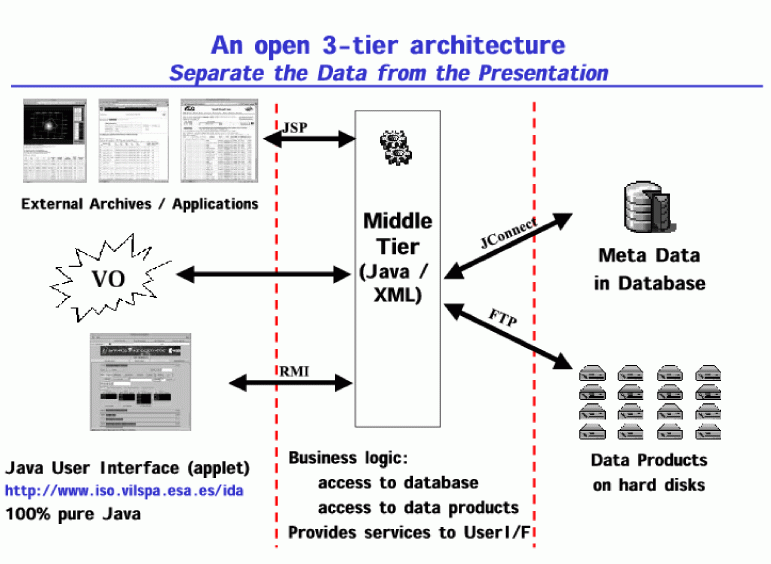
|
The ISO Data Archive opened to the external world on December 9, 1998, six months after the end of the operations (Arviset & Prusti 1999, [3] and Arviset et al. 2000, [4]). Through a pioneering user interface based on Java technology, complex queries can be issued to the ISO database. A textual and visual presentation of the data is offered to the users to aid them in selecting observations for retrieval through ftp. The ISO Data Archive was designed and developed at the ISO Data Centre in Villafranca del Castillo, Spain, with continuous and fruitful cooperation between users and developers to provide a unique state-of-the art astronomical data archive.
The IDA main characteristics can be summarized as:
The ISO Data Archive offers the user a self-contained, fast and powerful interface to all ISO data products. Complex queries can be made against hundreds of database parameters using friendly and modular query panels (general astronomical parameters, observer and proposal, timing constraints, list of targets, pointing and raster map constraints, instrument details, Highly Processed Data Products). The user is helped in the observations selection by a clear and configurable results display that includes quick look data browsing (static GIF icons and postcards and FITS products display), access to auxiliary and ancillary files, access to related observations in the ISO catalogue, on-line help and access to other archives (e.g. IRSA, ADS, CDS). Once logged in, via a simple click, the user can download the data products to his/her local disk for one observation or move this selection to a shopping basket, perform other queries, select other observations and later decide the level of processed products to download (standard datasets or user defined ones, for all or per observation).
The IDA is based on a flexible and open 3-tier architecture design, which main aim is to separate the data from the presentation. The overall system design was decided in early 1997 and has been able to fulfill all new requirements that have been raised since then.